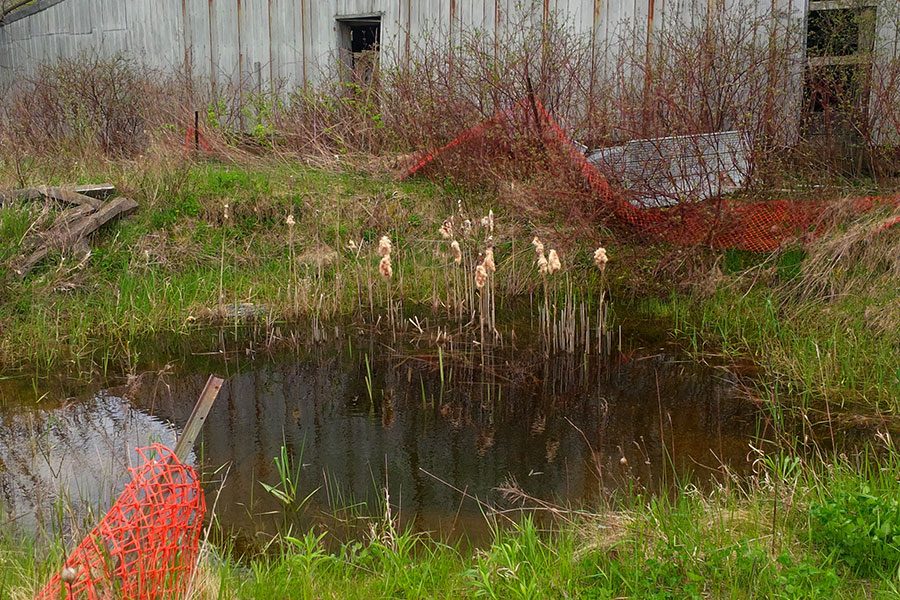When you dig a hole and leave, one thing is certain: Rain or shine, Mother Nature will fill it in with water and plants and it could become classified as wildlife habitat.
If plants and wildlife make it their home, then you’ll need to take the necessary and ethical steps to manage it as wildlife habitat.
Vacant holes are an aspect of site management frequently overlooked—often resulting in unforeseen, exorbitant costs. Aside from the arrival of wildlife, derelict holes that fill with water can also trigger spikes in trace elements that may not comply with environmental regulations.
One tip to avoid a hole becoming habitat is to regularly remove the colonizing vegetation. The density of colonist Broadleaf cattail (also called Typha latifolia) can indicate the age of the hole.
The bottom line? Abandoned holes can be very costly. If you need help determining if a hole has become habitat, contact Dean Fitzgerald, Premier’s Senior Ecologist at (519) 653-7140, ext. 291 or dfitzgerald@premiercorp.ca.

Wildlife such as the Leopard Frog (Lithobates pipens) will quickly find a hole. It is therefore important to manage your site!

This excavation to remove soil contamination occurred one year earlier. The sparse vegetation suggests a young pond.

This pool was abandoned for five years. With dense Broadleaf cattail, it is now habitat.

The clean-out of a ditch. This area is not considered wildlife habitat.





